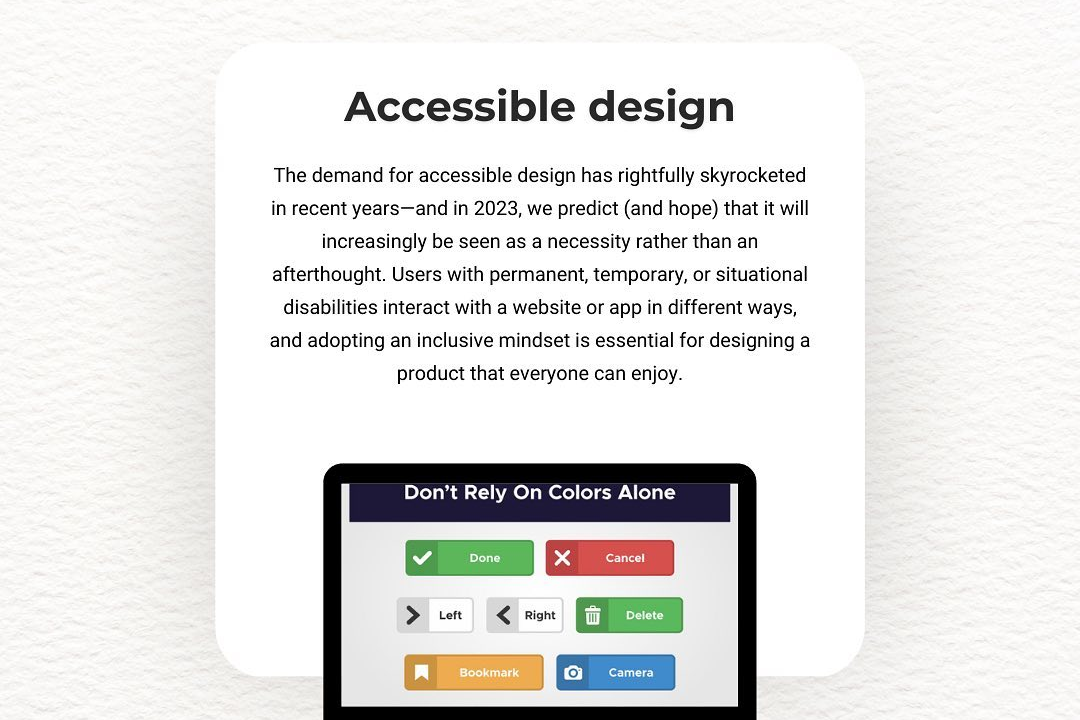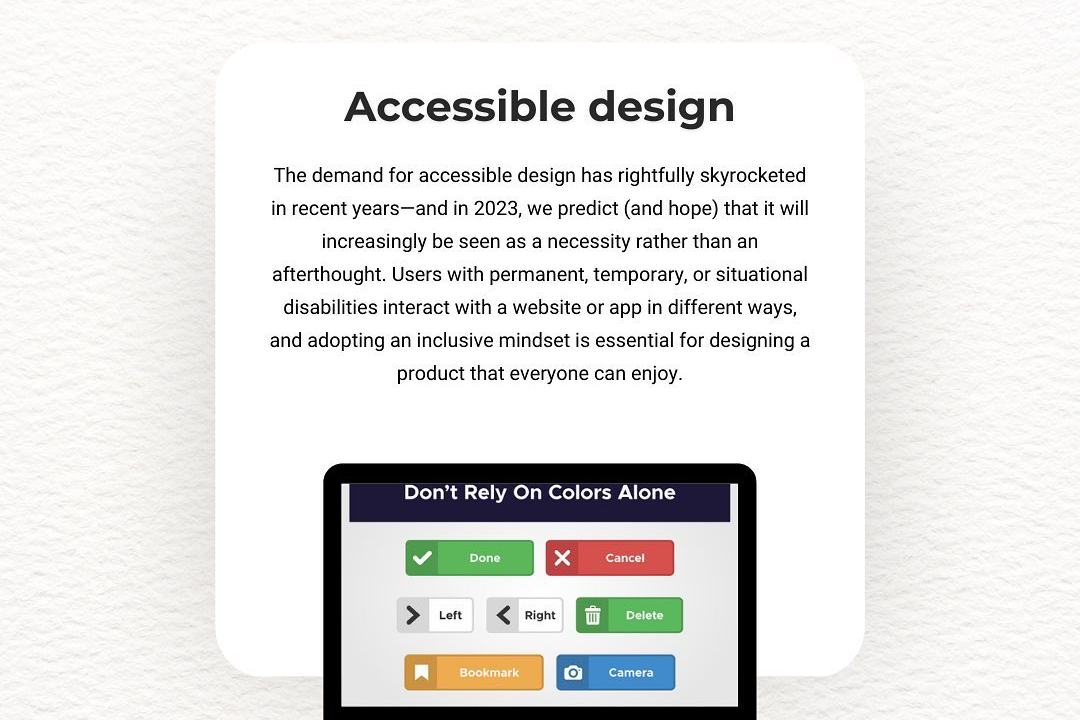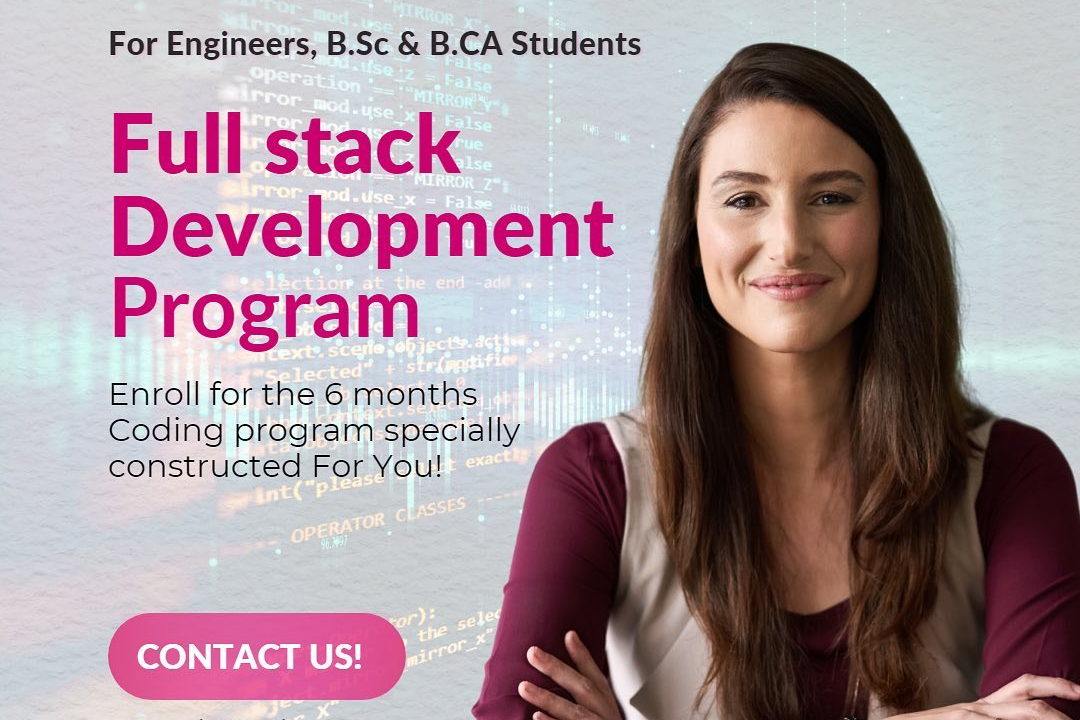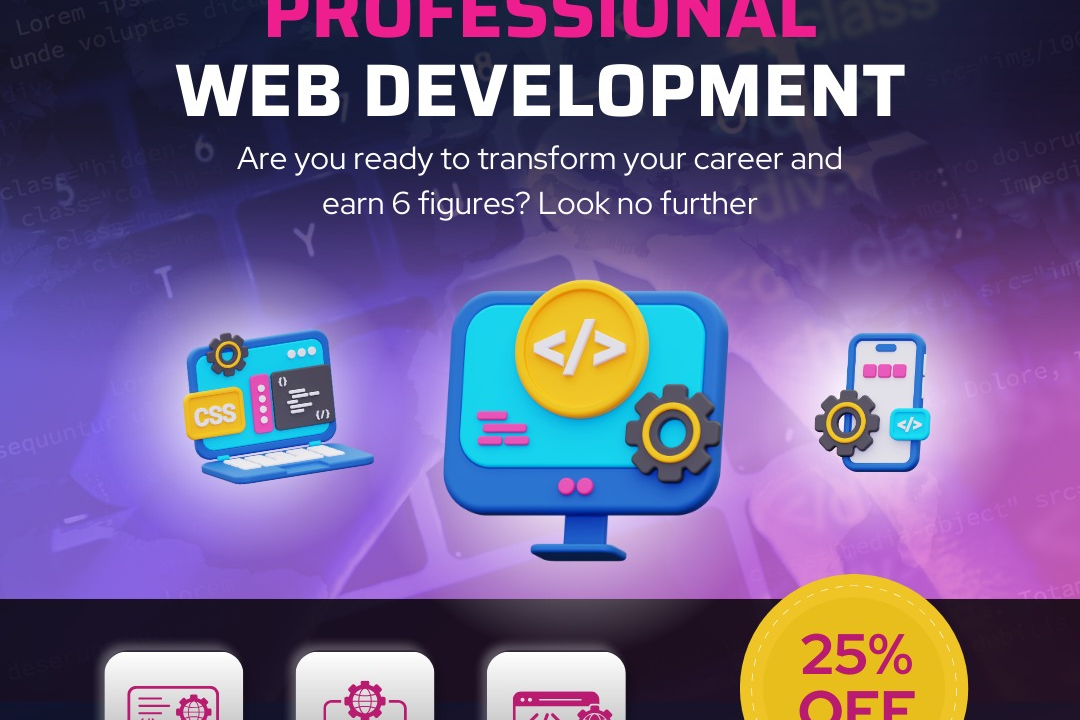Laravel Interview Questions For 1 Year Experience
Essential Laravel Interview Questions for Developers with 1 Year of Experience
Laravel Interview Questions For 1 Year Experience
Preparing for Laravel interview questions is essential for candidates with one year of experience, as it helps to solidify their understanding of this popular PHP framework and its practical applications. Being knowledgeable about Laravel’s components, such as routing, middleware, authentication, and Eloquent ORM, allows candidates to demonstrate their capability to develop efficient and scalable web applications. Additionally, these questions often assess the ability to solve real-world problems using Laravel, showcasing a candidate's hands-on experience and readiness to tackle project challenges. This preparation not only boosts confidence during interviews but also reinforces essential skills that are crucial for career advancement in web development.
To Download Our Brochure: https://www.justacademy.co/download-brochure-for-free
Message us for more information: +91 9987184296
1 - What is Laravel and why is it used?
Laravel is a PHP framework designed for building web applications following the MVC (Model View Controller) architectural pattern. It simplifies tasks like routing, sessions, and authentication, enabling developers to create robust applications efficiently.
2) What are service providers in Laravel?
Service providers are the central place of all application bootstrapping in Laravel. They are responsible for binding classes into the service container and configuring application services, ensuring that everything is set up before the application handles an incoming request.
3) Explain routing in Laravel.
Routing in Laravel provides a simple way to define routes using a clean syntax. Routes are defined in the `web.php` file and can handle various HTTP methods (GET, POST, etc.) with controllers, allowing for organized and maintainable code.
4) What is Eloquent ORM?
Eloquent ORM is Laravel's built in Object Relational Mapping framework, which allows developers to interact with the database using PHP syntax instead of SQL. It provides an ActiveRecord implementation, making it easier to manage database relationships and perform CRUD operations.
5) How do you handle database migrations in Laravel?
Database migrations in Laravel are version control for your database. They allow developers to define database schema changes in PHP code, which can be executed using Artisan commands (`php artisan migrate`) to keep the database structure consistent across environments.
6) What is middleware in Laravel?
Middleware is a filtering mechanism in Laravel that allows you to inspect and manipulate HTTP requests entering your application. It can perform various tasks such as authentication checks, logging, and modifying request/response objects before they reach the application or before the response is sent back.
7) How can you implement authentication in Laravel?
Authentication in Laravel can be implemented using the built in authentication scaffolding provided by the framework. You can use Artisan command line tool to generate controllers and views, and it supports features like registration, login, password reset, and email verification out of the box.
8) What are Laravel facades?
Facades provide a static interface to classes that are available in the application's service container. They offer a convenient way to use PHP classes, as they simplify the syntax required to interact with complex components without needing to instantiate them directly.
9) Explain what the service container is.
The service container in Laravel is a powerful dependency injection container. It manages class dependencies and performs dependency resolution, allowing developers to bind and resolve classes and interfaces dynamically.
10) What is the purpose of config files in Laravel?
Config files in Laravel are used to store application configuration settings. They are located in the `config` directory and provide a centralized way to manage settings such as database connections, caching options, and mail settings, making it easy to modify application behavior.
11 - How do you handle validation in Laravel?
Validation in Laravel can be handled using the built in validation features, either in controllers or via form request classes. You define validation rules, and Laravel will automatically handle the validation process, providing error messages when rules are violated.
12) What is the purpose of the .env file in Laravel?
The `.env` file in Laravel is used to store environment specific configuration settings. This file allows developers to manage sensitive information such as API keys, database credentials, and other environment variables without hardcoding them into the application.
13) Describe the concept of Laravel collections.
Laravel collections are a powerful wrapper around arrays that provide a fluent, convenient interface for working with arrays of data. Collections come with various methods for filtering, transforming, and aggregating data, making it easier to perform complex data manipulations.
14) How do you implement rate limiting in Laravel?
Rate limiting in Laravel can be implemented using middleware, specifically the throttle middleware. This allows you to limit the number of requests a user can make to a route in a given timeframe, ensuring fair usage of resources and improving application performance.
15) What are event listeners and events in Laravel?
Events in Laravel provide a simple observer pattern implementation, allowing you to decouple your code. You can fire events when certain actions occur and define listeners that respond to those events, enabling a clean and organized structure for handling asynchronous tasks.
These questions cover a variety of Laravel concepts that are relevant for candidates with one year of experience, showing both a foundational understanding and practical application of the framework's features.
Here are additional points covering various Laravel concepts suitable for candidates with one year of experience.
16) Explain the concept of route model binding in Laravel.
Route model binding is a feature in Laravel that allows you to automatically inject model instances into your routes based on the route parameters. By defining type hints in your route's closure or controller method, Laravel looks up the model by its primary key and provides it as an instance.
17) What are Laravel jobs and queues?
Jobs in Laravel are a way to encapsulate a task you want to perform, often scheduled to run in the background. Laravel queues allow you to defer the execution of a job until a later time, which is especially useful for tasks that take time to process, such as sending emails or processing uploaded files, thereby improving application responsiveness.
18) How do you set up testing in Laravel?
Laravel includes built in support for testing with PHPUnit and has a set of helper methods to facilitate testing. You can create test cases using the `php artisan make:test` command and utilize features like database migrations for setting up test data, asserting conditions, and testing APIs.
19) What is a request lifecycle in Laravel?
The request lifecycle in Laravel refers to the process that occurs when a request is made to the application, including routing the request, passing it through middleware, invoking the controller method, and finally returning a response. Understanding this lifecycle helps developers troubleshoot and optimize the application.
20) Discuss the use of repositories in Laravel.
The repository pattern in Laravel encourages separating your data access logic from your application logic. By creating repository classes for models, you can encapsulate query logic and improve code organization, making it easier to manage complex data interactions and promote code reuse.
21 - What are the differences between `GET` and `POST` requests?
GET requests are used to retrieve data from the server, and they append parameters to the URL, making them visible in the browser’s address bar. POST requests, on the other hand, send data to the server in the request body, suitable for submitting forms and handling sensitive information, as they don’t expose parameters in the URL.
22) What are Laravel events and broadcasting?
Events allow developers to decouple different parts of an application by triggering actions in response to specific events. Broadcasting extends this functionality by enabling real time event broadcasting over WebSockets, allowing you to push events to clients and update the user interface without reloading the page.
23) How do you implement localization in Laravel?
Localization in Laravel is handled through language files stored in the `resources/lang` directory. You can define language specific strings in these files and utilize the `__` helper function to retrieve them based on the current application locale, making it easy to support multiple languages.
24) What are Laravel policies and gates?
Policies and gates in Laravel are used for authorization. Gates are simple closures that determine if a user can perform a given action, while policies are classes that group authorization logic related to a particular model, providing a clean, organized way to manage permissions in your application.
25) How do you create API endpoints in Laravel?
Creating API endpoints in Laravel involves defining routes in the `api.php` file and using controllers to handle incoming requests. Laravel can generate responses in JSON format effortlessly, allowing developers to build RESTful APIs that are clean and intuitive to use.
26) What is the purpose of the Laravel console and artisan commands?
Laravel's console, powered by Artisan, provides a command line interface to perform various tasks related to the framework. Artisan commands can be used to generate code (e.g., controllers, models), run migrations, test applications, and manage queues, enhancing productivity and automation in the development process.
27) Explain how to implement file uploads in Laravel.
File uploads in Laravel can be handled using the built in file storage capabilities. You can use the `request() >file('upload_field')` method to retrieve uploaded files, validate them, and then store them in specified directories using Laravel's storage facade, which supports multiple drivers (local, S3, etc.).
28) What are Laravel mix and its uses?
Laravel Mix is a tool for asset compilation and management that allows developers to define build steps for JavaScript and CSS files using a clean API. It simplifies tasks like versioning, minification, and preprocessing with tools like Sass and Less, helping to manage frontend assets efficiently.
29) How does Laravel handle CORS (Cross Origin Resource Sharing)?
CORS support in Laravel can be managed using middleware. This enables your application to specify which domains are allowed to access resources, handling preflight requests and ensuring that cross origin requests comply with the defined policies for security and functionality.
30) What is the purpose of CSRF protection in Laravel?
Cross Site Request Forgery (CSRF) protection is crucial for Laravel applications to prevent unauthorized requests from being submitted on behalf of a user. Laravel automatically adds CSRF tokens to forms, and you can validate these tokens for POST requests, ensuring that submissions are secure.
These additional points further cover various concepts and best practices in Laravel, providing a comprehensive foundation for candidates to understand and discuss their experiences effectively.
Course Overview
The “Laravel Interview Questions for 1 Year Experience” course is designed to equip aspiring developers with a robust understanding of Laravel's core concepts, functionalities, and best practices. This course focuses on the essentials, including routing, middleware, controllers, and database interactions, while also exploring advanced topics such as job queues, event handling, and API development. Through a structured curriculum featuring real-time projects and hands-on exercises, participants will gain practical experience and confidence in their skills, preparing them thoroughly for interviews in the competitive job market. This comprehensive training will empower learners to articulate their knowledge effectively and demonstrate proficiency in Laravel during technical interviews.
Course Description
The “Laravel Interview Questions for 1 Year Experience” course at JustAcademy is tailored for budding developers seeking to solidify their understanding of Laravel through practical insights and real-world applications. This course covers essential topics such as routing, middleware, controllers, and database management, allowing learners to grasp key concepts while tackling relevant interview questions. With a focus on interactive learning, participants will engage in hands-on projects that reinforce their knowledge and boost their confidence. By the end of the course, students will be well-prepared to showcase their Laravel expertise and excel in technical interviews, positioning themselves as strong candidates in the job market.
Key Features
1 - Comprehensive Tool Coverage: Provides hands-on training with a range of industry-standard testing tools, including Selenium, JIRA, LoadRunner, and TestRail.
2) Practical Exercises: Features real-world exercises and case studies to apply tools in various testing scenarios.
3) Interactive Learning: Includes interactive sessions with industry experts for personalized feedback and guidance.
4) Detailed Tutorials: Offers extensive tutorials and documentation on tool functionalities and best practices.
5) Advanced Techniques: Covers both fundamental and advanced techniques for using testing tools effectively.
6) Data Visualization: Integrates tools for visualizing test metrics and results, enhancing data interpretation and decision-making.
7) Tool Integration: Teaches how to integrate testing tools into the software development lifecycle for streamlined workflows.
8) Project-Based Learning: Focuses on project-based learning to build practical skills and create a portfolio of completed tasks.
9) Career Support: Provides resources and support for applying learned skills to real-world job scenarios, including resume building and interview preparation.
10) Up-to-Date Content: Ensures that course materials reflect the latest industry standards and tool updates.
Benefits of taking our course
Functional Tools
1 - Laravel Framework: The course revolves around the Laravel framework itself, which is an open source PHP framework known for its elegant syntax and robust features. It supports MVC architecture, enabling students to understand the separation of logic, presentation, and data layers in web application development. Laravel's extensive libraries and tools simplify common tasks such as routing, authentication, and session management, allowing students to focus on building efficient applications.
2) PHP: As the primary language used with Laravel, PHP knowledge is crucial for students. The training includes an overview of PHP’s capabilities, best practices, and advanced features, allowing learners to write clean, efficient code. Understanding PHP helps students to grasp Laravel development principles deeply and prepares them for challenges they may face while working on real time projects.
3) Composer: Composer is a dependency manager for PHP that the course emphasizes extensively. It allows students to manage libraries and packages in Laravel applications seamlessly. With Composer, students learn to install, update, and manage the packages their applications depend on, ensuring their projects are always up to date with the latest features and security patches.
4) MySQL Database: Since most web applications require data management, the course incorporates MySQL as the primary database system. Students learn how to design, query, and manage databases effectively using SQL commands. The training also covers Eloquent ORM, which allows developers to interact with databases in a more intuitive and object oriented way, enhancing the overall efficiency of data handling in Laravel applications.
5) Git: The version control system, Git, is introduced to students as an essential tool for modern development workflows. Understanding Git enables students to track changes, collaborate with others, and manage different versions of their projects easily. The training includes practical exercises that showcase the importance of using Git in both personal projects and team environments, reinforcing its necessity in today’s software development landscape.
6) Visual Studio Code: The course recommends Visual Studio Code as the primary Integrated Development Environment (IDE) for Laravel development. This lightweight but powerful code editor offers extensions and features that enhance productivity, such as syntax highlighting, debugging capabilities, and code snippets. Students learn how to configure Visual Studio Code for Laravel, optimizing their coding environment for efficient development.
7) Postman: For testing APIs and backend services, the course incorporates Postman, a popular API development tool. Students practice sending requests, testing responses, and debugging APIs built with Laravel. Understanding how to use Postman effectively prepares students for real world scenarios where they will need to validate the functionality of APIs and ensure seamless integration between various systems.
8) Docker: As a modern tool for containerization, Docker is introduced to familiarize students with developing portable applications. The course covers how to create and manage isolated environments for different Laravel projects, boosting consistency in development, testing, and production outcomes. Students learn to set up Docker containers, streamlining deployment processes and enhancing efficiency while working on larger applications.
9) Laravel Forge: To equip students with deployment skills, the course introduces Laravel Forge, a service for deploying PHP applications easily. This allows students to manage servers, automate deployment processes, and handle SSL certificates. Being comfortable with Forge enables learners to understand how to move their applications from local environments to production, a critical step in completing Laravel projects.
10) Tinker: Laravel Tinker is a REPL (Read Eval Print Loop) tool that provides an interactive console to developers. This tool allows students to test and debug snippets of code in real time, facilitating a better understanding of how their application components interact. Engaging with Tinker during training helps students explore Laravel features more dynamically, enhancing their problem solving capabilities.
Utilizing these tools throughout the ‘Laravel Interview Questions for 1 Year Experience’ course ensures that students are not only prepared for interviews but also gain practical knowledge applicable in the modern software development environment.
Here are additional points to consider for your course on Laravel and its related tools:
11 - Middleware: Students will learn about Laravel's middleware, which provides a convenient mechanism for filtering HTTP requests entering the application. By understanding how middleware works, students can create custom middleware for tasks such as authentication and logging, enhancing their ability to manage request processing before it reaches the application layer.
12) Authentication and Authorization: This section covers Laravel’s built in authentication features, allowing students to implement user registration, login, password resets, and role based access control. Learners will practice securing routes and resources to ensure applications are safeguarded against unauthorized access, developing a robust understanding of user management in web applications.
13) Routing: The course includes an in depth exploration of Laravel's routing capabilities, showcasing how to define routes, handle parameters, and generate URLs easily. Students will understand the importance of clean, RESTful routing and how to create effective APIs, a critical component of modern web development.
14) Blade Templating Engine: Students will be introduced to Blade, Laravel’s powerful templating engine that allows for the creation of dynamic web interfaces. They’ll learn to utilize Blade’s syntax and features, such as template inheritance, control structures, and components, to develop clean, reusable views in their applications.
15) Unit Testing: Testing is a crucial aspect of software development. The course emphasizes the importance of writing tests using Laravel’s built in testing tools, such as PHPUnit. Students will learn how to write unit and feature tests to ensure their application works as intended and to maintain code quality throughout the development lifecycle.
16) RESTful APIs: Understanding how to build RESTful APIs using Laravel is a key focus. Students will learn about resource controllers, API routes, and how to return JSON responses, which are essential for creating backends that interact seamlessly with frontend applications or mobile apps.
17) Event Broadcasting: The course will cover event broadcasting in Laravel, allowing students to create real time applications. Learners will explore how to broadcast events to clients using channels in Laravel, providing them with the skills necessary to build dynamic, interactive web applications that engage users in real time.
18) Task Scheduling: Students will learn how to schedule tasks using Laravel’s task scheduling feature. This includes automating periodic operations such as sending emails, generating reports, or cleaning up databases, which is vital for maintaining consistent application performance and reliability.
19) Caching: The course discusses the caching mechanisms available in Laravel, which can significantly improve application performance. Students will learn how to utilize different caching techniques using Laravel’s cache library, including configuring cache drivers and implementing cache strategies effectively.
20) Localization and Internationalization: Students will be introduced to the concepts of localization and internationalization in Laravel, enabling them to create applications that can support multiple languages and regional settings. This skill is essential for developers who aim to build applications for a global audience.
21 - Performance Optimization: The course also includes best practices for optimizing Laravel applications in terms of speed and efficiency. Students will explore techniques such as route caching, view caching, and optimizing database queries, ensuring they can build applications that perform well under load.
22) Laravel Scout: This section introduces Laravel Scout, a driver based solution for full text search. Students will learn how to implement search functionalities in their applications, utilizing search engines like Algolia or Elasticsearch, which is an increasingly important feature in many applications.
23) Deployment Strategies: Beyond Laravel Forge, the course will cover various deployment strategies, including manual deployment, container based deployment using Docker, and CI/CD pipelines with tools like GitHub Actions or Jenkins, preparing students for real world deployment scenarios.
24) Design Patterns: The course provides insights into common design patterns used in Laravel, such as Repository Pattern and Service Layer, helping students write clean, maintainable code. Understanding these patterns enhances their ability to architect scalable applications.
25) Working with Third Party APIs: Students will learn how to integrate and interact with third party APIs in Laravel applications. This includes making HTTP requests, handling API responses, and using packages like Guzzle to streamline API interactions, which is vital in today’s interconnected application landscape.
26) Error Handling and Debugging: The course teaches students how to effectively handle errors and exceptions in Laravel applications. They'll learn how to use Laravel’s built in error handling features and debug their applications using tools like Laravel Debugbar and Telescope.
Implementing these topics into your course not only enriches the learning experience but also prepares students with comprehensive skills applicable in real world development, setting them up for success in their careers.
Browse our course links : https://www.justacademy.co/all-courses
To Join our FREE DEMO Session: Click Here
This information is sourced from JustAcademy
Contact Info:
Roshan Chaturvedi
Message us on Whatsapp:
Email id: info@justacademy.co
Photon Ios Developer Interview Questions
Data Storage Options
ios interview questions for experienced 2018 PDF











